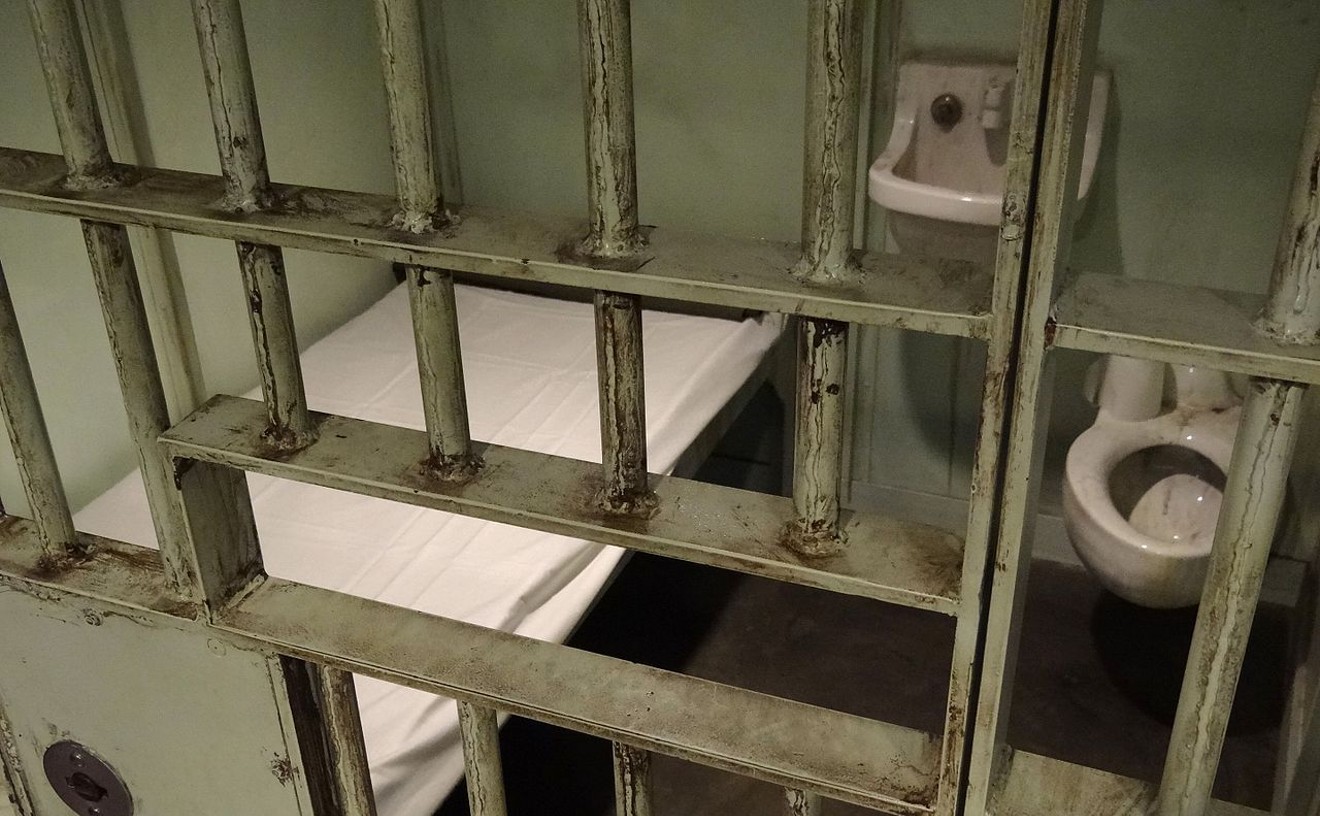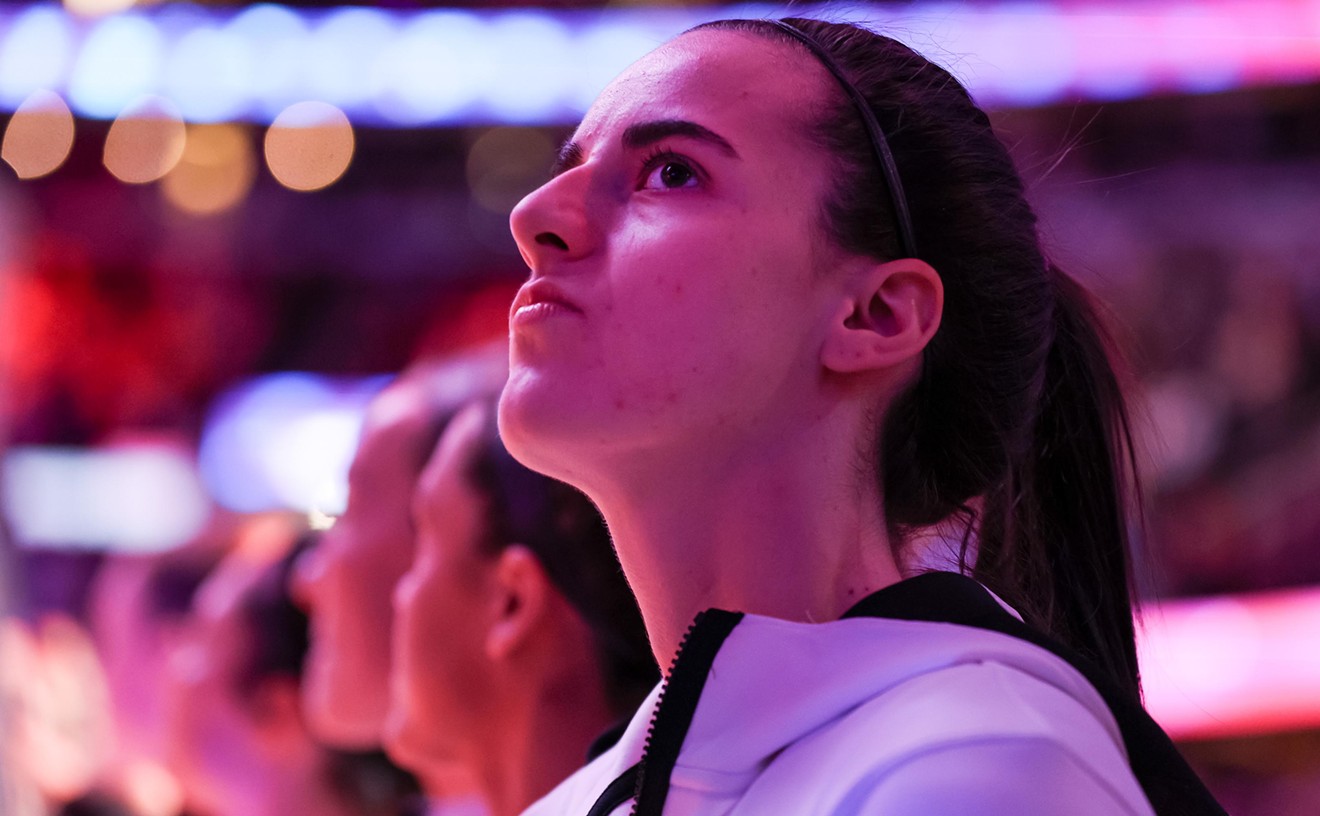The 19-year-old aeronautical engineering major at Purdue University--Neil Armstrong's alma mater, he was quick to point out--has been working the spring semester at NASA and vows to be an astronaut exploring the Final Frontier some day. His goal is to conduct scientific research experiments on shuttles like Columbia. A skinny kid who wears aviator glasses, Grant has already landed a pilot's license. He's watched The Right Stuff at least 100 times, is a fifth of the way through Buzz Aldrin's book and tries to meet every astronaut he can.
He's mastered the clipped technical lingo of space scientists, which is readily apparent with his description of Columbia's launch from Mission Control more than two weeks ago:
"It was nominal; it was how we want it," he said. "The trajectory, the speed, the solid rocket booster separation looked perfect. Everybody was smiling and pleased that it was a job well done."
In the pre-dawn hours this Saturday, he picked up his father--John Grant, a University of Dayton physicist in for Mike's birthday celebration--ate a bowl of Cheerios and readied himself for the final euphoric ending of the Columbia mission.
Mission Control workers had seemed casual--chatting, saying hi to new arrivals and busying themselves with phone calls. About 8 a.m., the distractions stopped. Shuttle temperature sensors and tire pressure readings were going haywire.
Major Charlie Hobaugh at Mission Control didn't betray any alarm, however, in talking to the crew: "We see your tire pressure message, and we did not copy your last."
"Roger." That was the last word from Commander Rick Husband that Grant understood.
Grant, although a novice, soon realized what the others in the cavernous room already knew: There were big problems.
Then silence. Mission Control kept asking if the shuttle copied. It didn't. More silence.
"I just stared at the screens in front of me," Grant said. A CNN news feed flashed on with video of the speck of a shuttle breaking up against the bright blue sky.
A security guard told Grant that since he was just watching and not working, he needed to get out of NASA's way. Word finally came that Columbia was indeed returning to earth--as bits of debris showering down over East Texas.
A small cluster of cars driving down Interstate 10 in Katy, just west of Houston, had an emergency cell-phone conference call to discuss aborting their own mission.
Richard Herrera was one of the chauffeur/chaperones for Sprecht Elementary School students' Saturday-afternoon field trip to Space Center Houston, the NASA-themed educational and amusement park attraction. Herrera was the first to hear the ominous news bulletins on the radio. He had loaded his kids in the car and left San Antonio at 6:30 a.m. and was just outside Katy when radio broadcast the information.
"We didn't believe it," he says. Herrera called another father in the caravan, told him to turn off his Journey CD and turn on the radio. They had their should-we-keep-driving-or-turn-back discussion. The final miles were spent fielding calls from panicked grandmothers, reassuring them that they weren't heading into a storm of toxic debris.
The kids played in the car. And they continued playing at Space Center Houston, running around the giant Lego astronaut, screaming and climbing on the robotics displays. Inside the Zero Gravity Diner, adults sat with stunned, shell-shocked expressions. Some stared blankly over star-shaped french fries and Caesar salads, looking like they wanted to cry and debating whether it was a terrorist attack aimed at the Israeli astronaut on board; others talked about budget trims and said NASA cut too many corners and maybe it was just surprising that it hadn't happen sooner.
Reactions from visitors revealed the obvious: Shuttle missions have become so routine that most people, even in the Houston-dubbed Space City, were no longer aware of them.
Andreas Lipski, a tourist from Berlin, hadn't listened to the news, and like many people didn't even know that the shuttle was in space--much less that seven people had died.
"Civilians or astronauts?" he asked.
Astronauts.
"Oh, fuck," he said. "Another tragedy."
Herrera tried to put the numbness in perspective: "It hasn't sunk in all the way yet."
The gift-shop cashiers felt the shock waves. Hardly anyone had bought Columbia pins and patches before Saturday. But they quickly sold out of a new shipment by lunchtime, said Blanca Ontiveros, the 20-year-old cashier.
Her thoughts were fixed on shuttle pilot William McCool, whose picture and biography she has next to the register. His son Chris worked with Ontiveros in the gift shop last summer. She said he kept bragging about how neat it was that his dad had gotten picked for this mission. "We haven't heard from him yet," Ontiveros said.
She spent the morning hoping that his dad was alive and that everything would be OK.
Nearby, at the Johnson Space Center, security guards yelled at part of the San Antonio school caravan when they made a wrong turn in the parking lot and began to edge near off-limits areas. The Space Center tours were stopped, as well as the tram that takes people to peer through the glass of Mission Control.
A handful of reporters had been ready for the Columbia landing, which had seemed like a footnote to the harsher news of pending war and a sluggish economy. Now they were scrambling to cover the disaster. TV reporters stood outside JSC in front of old rockets doing live, "We're here at NASA to keep you informed and updated" shots.
They waited to watch a live video of the 10 a.m. NASA news conference at Kennedy Space Center, which was postponed until about 1 p.m. In the interim, about a dozen NASA spokespeople did multilingual live, on-air interviews reciting standard press releases. As the wait lengthened, reporters busied themselves with previously ignored press kits listing astronaut hobbies and other Playboy-centerfold -style biographical facts.
NASA communications workers tried to ignore their own distractions. Beth Nischik had just learned that her father in Chicago had suffered a heart attack. She wanted to fly there. She stayed at NASA. "I don't know where I need to be," she said. "This has been a really crazy day."
Outside the building, mourners were already arriving with flowers to begin a makeshift memorial that will eventually stretch for blocks.
Astronaut-hopeful Grant spent the morning eating bagels and watching CNN. He and his father arrived at Space Center Houston around 1:30 p.m. The teen-ager talked with more machismo than ever before about his goal of going into space. "It's a risk," he said. "But it's worth it. I'd be more angry if I hadn't tried and had just sat around."
"He has to do what he wants to do," his dad said. "I'm quite prepared for it."
Mike headed straight to the gift shop to spend the birthday money his aunt mailed him.
He wanted a NASA T-shirt. The one that says "Failure is not an option."










